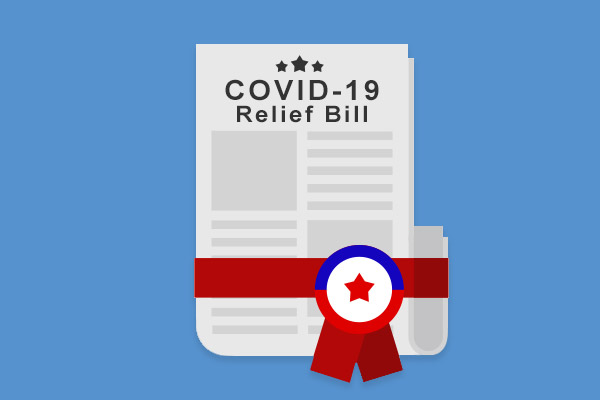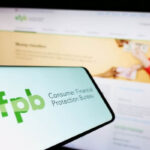The second COVID-19 relief bill is now law – all 3,126 pages of it.
The people in Congress who passed it admit they don’t know what all is in it, so the average American probably has no clue.
You’ve probably heard how lawmakers haggled for months over the package, how President Trump threatened not to sign it and how he’s now hectoring the Senate to provide more money for people.
Allow us to cut through all the hot air and drama that’s been coming out of Washington D.C., and help you understand what the bill means to you.
What Is in the COVID-19 Relief Bill?
A better question is what’s not in the bill? With a price tag of $908 billion, it’s the second-largest federal stimulus package after the $2 trillion CARES Act that Congress approved last March.
The bill addresses unemployment, pending evictions, rental assistance, small-business loans, vaccine distribution, farm subsidies, medical insurance costs, education funding, internet access, climate change, health issues and a lot of other things.
In typical Congressional fashion, the bill for Covid-19 relief was tacked onto a $1.4 trillion catchall spending bill that added another 2,500 pages of legalese.
But what’s another $2.3 trillion in spending that the government doesn’t actually have the money for? Future generations will have to deal with that.
For now, the $908 billion question most people have is, “How much money is in it for me?”
$600 Stimulus Checks
Republicans and Democrats bickered for months over how big the checks should be for working Americans. They finally agreed on $600 second stimulus check, which Trump ostensibly agreed to when he signed the bill Sunday night.
Before that ink was dry, however, he started demanding $2,000 payments. That’s triggered days of Congressional debate, posturing and brinkmanship.
The bottom line is there’s a better chance of Senate Majority Leader Mitch McConnell becoming a Hip-Hop superstar than him allowing the $2,000 amendment to get a vote.
So unless he becomes Snoop Dogg Mitch, here’s the deal:
Individual adults who make $75,000 a year or less will receive a $600 payment. There is also a $600 payment for each child for families who meet those income requirements.
People making more than $75,000 a year will receive a partial payment that declines by $5 for every $100 in income.
And like that first stimulus check, the money is tax-free!
Unemployment Benefits
If you’re out of work, you’ll get $300 in unemployment benefits a week from the federal government through March 14. That’s on top of whatever you’re getting from state unemployment, but it’s $300 a week less than the federal benefit in the first stimulus bill.
Rental Assistance
There’s $25 billion in rent assistance, which will be given to state and local governments. You’ll have to monitor those agencies to see how much they receive and how they plan to distribute it.
And you won’t have to worry about getting kicked out of your house or apartment for a few weeks. The bill extends the federal moratorium on evictions through Jan. 31.
SNAP Assistance
Food stamp benefits, known as the Supplemental Nutrition Assistance Program, will be increased by 15% for the first six months of 2021. The bill provides $13 billion for nutrition needs, including $400 million for food banks and food pantries.
Help for Small Businesses
Studies show about 85% of small businesses have been hurt by the pandemic. The Paycheck Protection Program kept many of them afloat in 2020, and the new bill provides $285 billion in loans for the PPP.
Loans will be capped at $2 million and available only to businesses with fewer than 300 employees that experienced at least a 25% drop in sales from a year earlier in at least one quarter.
Additional COVID-19 Aid
There’s a grab bag of other high-dollar goodies in the bill. You’re sure to find something on this partial list that you’ll like.
- Vaccines – There’s nearly $70 billion for public health measures, including $20 billion for the purchase of vaccines, $8 billion for vaccine distribution and an additional $20 billion to help states continue their test-and-trace programs.
- Broadband Access – The bill provides $7 billion for expanding access to high-speed internet connections. About half of that will go toward providing $50 a month to low-income families to pay for internet service.
- Funding for Schools – Kindergarten through high school institutions will get $54 billion, while colleges and universities will get $23 billion.
- Provision for Medical Billing – COVID-19 delivered a lot of unexpected and expensive hospital bills. The bill makes it illegal for hospitals to charge for a variety of services, like emergency treatment by out-of-network doctors, which patients often have no say about.
- Etc. – There’s $10 billion for childcare providers. Some of that will go to families struggling to pay tuition at daycare centers. There’s $10 billion for highway repair and construction, $35 billion for wind, solar and other clean-energy projects.
And what would any monstrous D.C. bill be without a billion dollars for Amtrak?
What Was Left Out of the Covid-19 Relief Bill?
There were some losers in the bill, most notably cash-strapped state governments, students who’ve borrowed money to pay for their college education and businesses that fear a blizzard of COVID-related lawsuits.
Oh, and anyone who thought they’d actually receive a $2,000 check instead got a reality check instead.
Larger Stimulus Checks
McConnell has tied the $2,000 proposal to measures regarding online-speech rules and Trump’s complaints about election fraud.
He’s taken steps to put all three items into one bill, without scheduling a vote. In other words, he’s burying the $2,000 idea in legislative maneuvering.
Student Loan Assistance
The bill doesn’t extend the suspension of student loan interest payments, which will expire Jan. 31. There is also no student loan forgiveness, though that will probably resurface in future bills.
Aid for State and Local Governments
State and local governments wanted a lot more direct aid. Democrats were for that, while Republicans said the money would only bail out poorly-run states that were billions in debt before the pandemic.
The Republicans won, though states with unused dollars from the CARES Act are allowed to spend it in 2021 instead of returning any remaining funds.
Liability Protection for Businesses
The business community fears an avalanche of lawsuits from employees who might have contracted the virus at work. The new bill didn’t give them the liability protection they wanted, much to the delight of personal-injury lawyers.
Will There be Another Covid-19 Relief Bill?
Good times or bad, a lot of Congress members love nothing more than to spend money. So you can bet there will be more COVID-19 relief, even if the new administration didn’t want it.
Rest assured, President Biden will want it. He called the bill that just passed a “down payment” on addressing the pandemic.
Nobody’s talking numbers yet, but Biden has said money will go toward extending the eviction moratorium, COVID-19 testing, vaccine distribution, small businesses, personal protection equipment, transportation, education and a lot of other things.
As for a third round of stimulus checks, the question isn’t whether they will materialize. The only mystery is how much you’ll be getting.
But first, you’ll probably have to endure another round of negotiating drama and hot air from Washington D.C. Feel free to ignore it until the bill actually passes, then we’ll be happy to again explain what it means for you.
Sources:
- Pilon, A. (2020, December 8) SCORE Looks at Impact of COVID-19 on Small Business in the US. Retrieved from https://smallbiztrends.com/2020/12/score-survey-covid-impact-small-business.html
- Gregorian, D. (2020, December 29) McConnell blocks Senate Democrats' move to pass $2,000 coronavirus checks. Retrieved from https://www.nbcnews.com/politics/congress/mcconnell-blocks-senate-democrats-move-pass-2-000-coronavirus-checks-n1252483
- N.A. (2020, December 21) RULES COMMITTEE PRINT 116–68 TEXT OF THE HOUSE AMENDMENT TO THE SENATE AMENDMENT TO H.R. 133 Retrieved from https://rules.house.gov/sites/democrats.rules.house.gov/files/BILLS-116HR133SA-RCP-116-68.pdf
- N.A. (2020, December 21) Fact Sheet: COVID-19 Relief FY21 Omnibus. Retrieved from https://appropriations.house.gov/sites/democrats.appropriations.house.gov/files/COVID-19%20Relief%20FY21%20Omnibus.pdf
- N.A. (2020, December 21) DIVISION-BY-DIVISION SUMMARY OF COVID-19 RELIEF PROVISIONS. Retrieved from https://appropriations.house.gov/sites/democrats.appropriations.house.gov/files/Summary%20of%20H.R.%20133%20Coronavirus%20Relief%20Provisions.pdf








